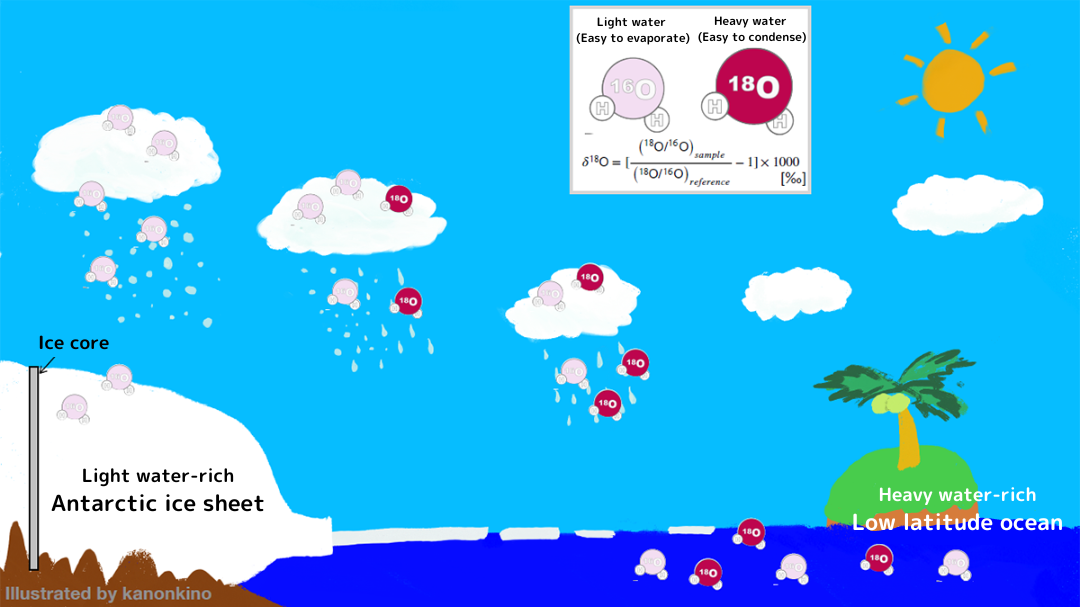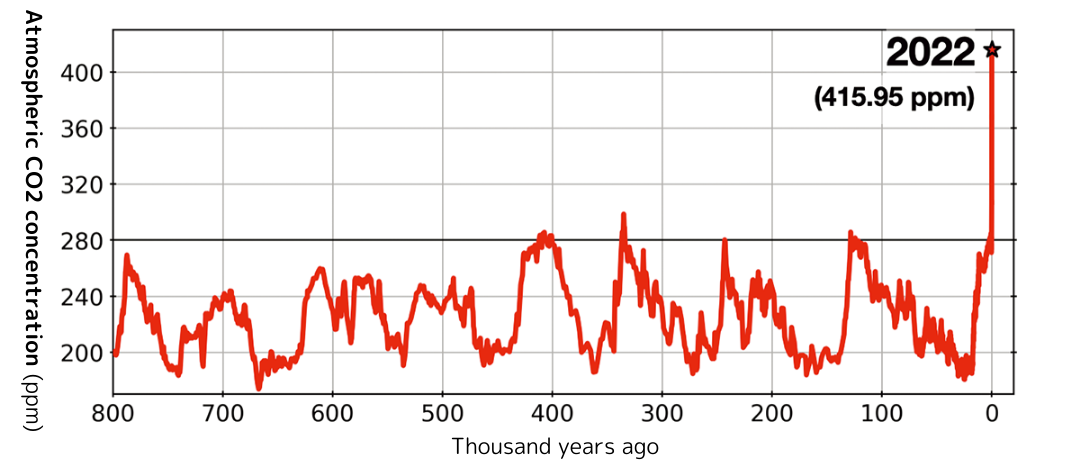UTokyo researchers answer questions on 21 GX (Green Transformation) topics from their specialist viewpoints. Through questions that cannot simply be brushed off as someone else’s concerns, take a peek into GX and our world of research.
Q17. Is it true that the Earth will cool down in the long run?
It’s been said that the next glacial period is approaching. If that’s so, do we need to worry about global warming?Answered by Kanon Kino
Assistant Professor, Graduate School of Engineering
Paleoclimatology

The present warm interglacial period is projected to continue for several tens of thousands of years

The ratio of heavy water isotopes in precipitation decreases with air temperatures, particularly in polar regions.
Over the past one million years, the Earth has experienced quasi-periodic cycles of cold glacial periods alternating with warm interglacial periods. Each cycle lasts several tens or a hundred of thousands of years and is driven by astronomical parameters (changes in eccentricity of the Earth’s orbit around the Sun, tilt of the Earth’s axis of rotation, and precession of the Earth’s axis of rotation), causing a seasonal-latitudinal redistribution of insolation on the Earth. We are currently in an interglacial period that started around 10,000 years ago. The length of these warm interglacial periods has varied through the past one million years. The present interglacial period is expected to continue for 30,000 to 50,000 years if we only consider changes in future insolation (Archer and Ganopolski, 2005).
Carbon dioxide (CO2) and other greenhouse gas emissions due to human activity will significantly impact the length of the interglacial period. Past changes in atmospheric CO2 concentration (hereafter referred to simply as CO2) as the cycles of glacial and interglacial periods continued can be determined by studying Antarctic ice cores (Figure 1). The CO2 had remained from 180 to 280 ppm during these cycles, but human activity has caused the CO2 to suddenly increase in the last 100 years, reaching 416 ppm in 2022 (Figure 2). Since the prevailing view is that this increase in atmospheric CO2 will extend the length of the present interglacial period, we can presume that no climate cooling will happen anytime soon.

The CO2 concentration has remained within a constant range over the past 800,000 years but has rapidly increased in the last ~100 years.
Datasets obtained from -Bereiter, B. et al. Revision of the EPICA Dome C CO2 record from 800 to 600 kyr before present. Geophys. Res. Lett. 42, 542-549 (2015). -Dr. Pieter Tans, NOAA/GML (gml.noaa.gov/ccgg/trends/) and Dr. Ralph Keeling, Scripps Institution of Oceanography (scrippsco2.ucsd.edu/).
/
Plushie of Anomalocaris (extinct arthropod)
in Assistant Professor Kino’s lab
\
The past is the key to the future
Climatologists around the world are using climate models to project future climate changes; however, the accuracy of these projections remains uncertain. Unfortunately, we cannot hop into a time machine to see how much warmer the climate has gotten at the end of the 21st century. However, even if we cannot use a time machine, we can employ indirect methods to study what the climates were like in the past. For instance, Antarctic ice cores can tell us how the CO2 has changed (Figure 2), as well as provide a lot of other information about the past climate. Among others, one key indicator is past air temperature changes, which can be determined by measuring the ratio of the water isotopes in ice cores. There are a few stable isotopes of water molecules. The concentration of the heavier water isotopes in atmospheric vapor decreases as the air temperature decreases (Figure 1), enabling the reconstruction of past air temperatures from precipitated signals, namely ice cores. Therefore, if a climate model accurately reproduces observed changes in past air temperatures, it enhances confidence in future climate projections.
The critical question in this case is how to accurately estimate changes in air temperatures based on variations in stable water isotope ratios. Conventional research has utilized empirical equations and simplified one-dimensional theoretical models to convert isotope ratios into air temperatures. In contrast, my research simulates past climate by employing a model — also used for projecting future climate change — that explicitly represents the transport of water isotopes in the atmosphere. With this model, we revealed that meteorological factors, including the westerly winds and the high and low pressures, significantly influence the relationship between the isotope ratios in Antarctic snowfall and air temperatures. Furthermore, we plan to evaluate climate models by utilizing Antarctic ice cores and past climate reconstructions from around the world.








